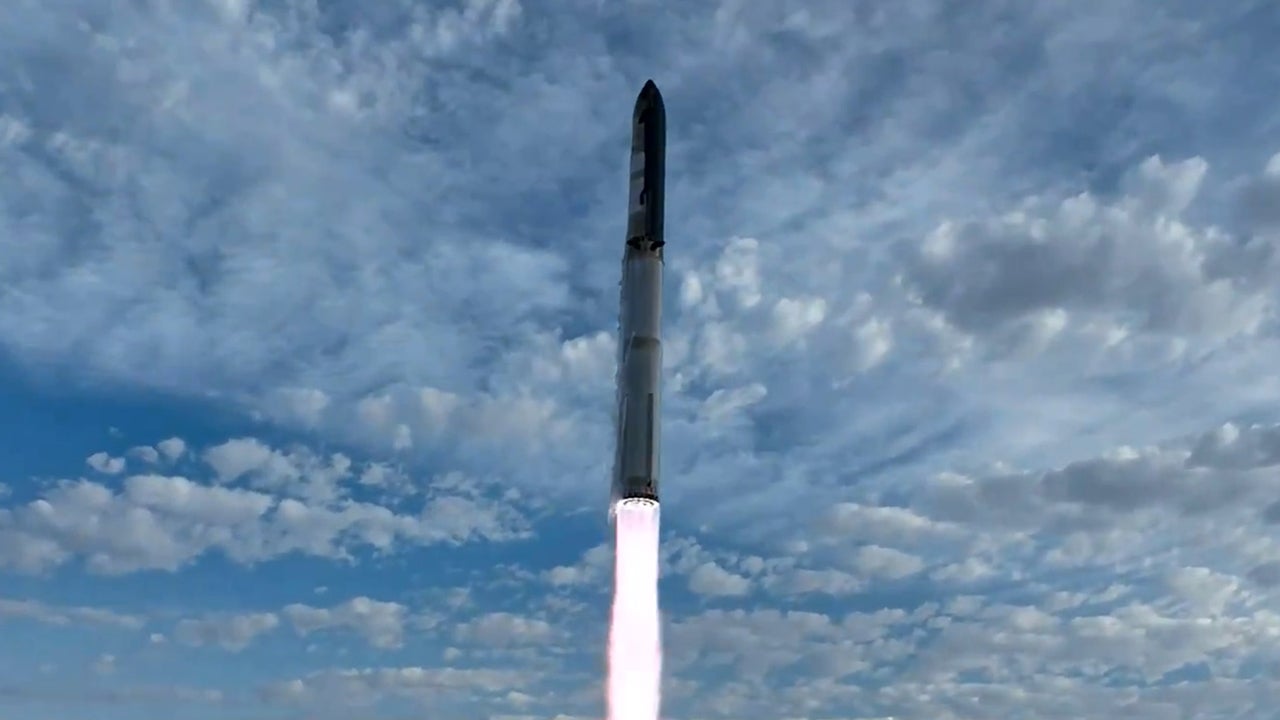SpaceX has successfully completed the third suborbital test launch of its uncrewed Starship spacecraft and Super Heavy Booster, which saw the vast upper stage fly farther and faster than ever before on a journey that saw it enter space and complete a number of milestones before returning to Earth in a fiery descent.
The launch came after the Federal Aviation Administration (FAA) granted SpaceX an eleventh hour licence to fly its leviathan rocket, which had been grounded pending the completion of a mishap investigation triggered by last November's explosive outing, which saw the loss of both Starship and its first stage booster.
SpaceX’s primary goals for today’s suborbital mission were to have Starship complete a successful ascent through Earth's atmosphere using the Super Heavy Booster, and Starship upper stage, before testing the spacecraft’s payload door as it coasted high above the planet's surface. This coast phase would also be used to test propellant transfer in the microgravity environment.
Liftoff of Starship! pic.twitter.com/FaNcasuKaq
— SpaceX (@SpaceX) March 14, 2024
Much like the Falcon 9 rocket before it, both the Starship spacecraft and its Super Heavy Booster first stage have been designed to be recovered and reflown multiple times. However, for the third test flight, no part of the launch system will be recovered for reuse.
In light of the new and ambitious flight goals, the company chose to have their spacecraft follow a different trajectory compared to previous missions, which would ensure public safety, while allowing the rocket to perform a controlled descent into the Indian Ocean, assuming all went well during ascent.
Pioneering a new super heavy launcher capable of sending humans to the Moon is a tricky endeavour, and so its hardly surprising that SpaceX has faced some significant teething issues while trying to get Starship into orbit. However, each subsequent mission provides a wealth of fresh data that can be used to improve subsequent iterations of the enormous spaceship.
Starship’s Raptor engines have ignited during hot-staging separation. Super Heavy is executing the flip maneuver pic.twitter.com/T593ACilyD
— SpaceX (@SpaceX) March 14, 2024
During its last suborbital mission in November 2023, all 33 of the Starship Super Heavy Booster’s Raptor engines started up without issue, propelling the rocket tens of kilometers into the sky above SpaceX’s Starbase Texas launch site. However, shortly after stage separation, a suspected blockage in the fuel supply led to a series of failures that saw the booster segment explode at an altitude of 90 km.
Meanwhile, the Starship upper stage continued onward under the power of its six Raptor engines up until the seven minute mark, at which point a fuel leak started a fire that severed communications with ground control, triggering the activation of the spacecraft’s flight termination system.
Despite the complete loss of the flight hardware, SpaceX considered the mission to be a success, as it had allowed engineers to collect valuable performance and anomaly data that could be used to improve the next iteration of the Starship Moon rocket. To that end, the company has been busy implementing a number of internal changes to the hardware that would lower the risk of fires and propellant leaks ahead of the third outing.
Starship's Third Test Flight
At 8:25 a.m. CT On March 14, SpaceX’s third Starship test took flight, with all 33 Raptor engines igniting once again to push the 400 ft tall rocket off the launch pad, and into the Texas sky. Roughly two minutes and fifty seconds into the flight, Starship’s upper stage engines ignited to push the Super Heavy Booster away, signalling a succesfull hot stage seperation.
As Starship continued onwards, the lower stage flipped to perform a succesful boostback burn to place it on a trajectory to splash down in the Gulf of Mexico. However, a number of engines failed to reignite during the soft landing attempt, leading to the destruction of the booster.
Nine minutes into the mission, Starship's vaccuum optimized Raptor engines shut down, initiating a coast phase in which SpaceX engineers were able to succesfully test the 'pez' payload door, which would be used to deploy Starlink satellites during future missions. The ground team were also able to transfer fuel from the spacecraft's header tank to another container.
Starship re-entering Earth's atmosphere. Views through the plasma pic.twitter.com/HEQX4eEHWH
— SpaceX (@SpaceX) March 14, 2024
During descent, viewers were treated to spectacular live footage - relayed courtesy of Starlink satellites - which showed Starship wreathed in plasma as it descended through Earth’s atmosphere, protected by an array of 18,000 hexagonal heat shield tiles. A subsequent loss of data indicated that the spaceship was not able to survive re-entry.
Starship is a key part of NASA's plan to return astronauts to the lunar surface under the Artemis program, and SpaceX's even grander ambition to create a human colony on Mars. The success of today's test flight brings these lofty ambitions one step closer to becoming a reality, though many many more flights will be needed before Starship will be considered ready to carry a crew of astronauts into orbit, and far beyond.
Be sure to stick with IGN to stay up to date with humanity's efforts to explore the solar system, and unravel the secrets of the cosmos using powerful observatories, including Hubble, and the James Webb Space Telescope.
Image credit: SpaceX
Anthony is a freelance contributor covering science and video gaming news for IGN. He has over eight years experience of covering breaking developments in multiple scientific fields and absolutely no time for your shenanigans. Follow him on Twitter @BeardConGamer






